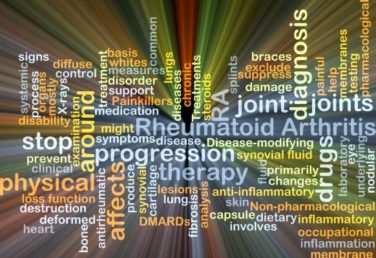AT OARSI 2015
SEATTLE (FRONTLINE MEDICAL NEWS) – New data presented at the World Congress on Osteoarthritis further suggest that hand osteoarthritis and cardiometabolic disease may have a shared etiology or pathophysiology.
In a study of 869 patients with hand osteoarthritis, those with ischemic cardiac disease were more than three times as likely to have joint symptoms and had greater clinical progression. In addition, obese patients had more extensive radiographic disease in their hands.
The results add to previous data showing higher rates of ischemic cardiac events in patients with symptomatic hand osteoarthritis ( Ann. Rheum. Dis. 2013;74:74-81 ), according to Dr. Alice Courties, a rheumatologist at Saint-Antoine Hospital, Université Paris 6, Assistance Publique–Hôpitaux de Paris.
“One hypothesis is that symptomatic hand osteoarthritis and cardiometabolic disease share a common background based on chronic low-grade inflammation,” she proposed.
In an interview, Dr. Lisa Mandl , a rheumatologist at the Hospital for Special Surgery, New York, and one of the session’s comoderators, said, “I think this study is confirmatory that inflammation may play a role in non–weight-bearing joints.” She noted that analyses stratified by anatomic subtype of hand osteoarthritis would have been additionally informative.
Dr. Nigel Arden , the other session comoderator and director of both Musculoskeletal Epidemiology and the Oxford Musculoskeletal BioBank at the University of Oxford (England) said, “I think the whole association of cardiovascular risk, metabolic syndrome, and osteoarthritis is very important, and very important in treating patients or intervention. And this [study] is an integral part of that work.”
Giving some background to the research, Dr. Courties noted that risk factors for the development of hand osteoarthritis have been identified, but factors associated with clinical and radiographic severity of disease and with progression remain poorly defined.
The investigators performed an ancillary study of patients enrolled in the phase III, randomized Strontium Ranelate in Knee Osteoarthritis (SEKOIA) trial, in which assessments included hand x-rays and hand symptoms. The trial was conducted by Servier, but the ancillary analysis was fully independent.
Cross-sectional analyses were based on 869 patients with hand osteoarthritis, defined as presence of at least two joints with a Kellgren-Lawrence score of 2 or higher. In terms of clinical severity, 26% of patients had symptomatic hand joints, defined as a Functional Index for Hand Osteoarthritis (FIHOA) score of 5 or greater; in terms of radiographic severity, the average summary Kellgren-Lawrence hand score was 21 out of 128 points.
Results of multivariate analyses showed that patients with ischemic heart disease were more likely to have symptomatic hand joints (odds ratio, 3.59), according to data reported at the meeting, which was sponsored by the Osteoarthritis Research Society International. Odds were also higher for postmenopausal women, and for patients who had depression, a higher Kellgren-Lawrence hand score, or more joints showing erosion.
Patients who were obese (a body-mass index of 30 kg/m2 or greater) had more severe radiographic disease assessed with the hand score (beta, 2.88 points). Severity was also greater for those who had symptomatic hand joints or a higher Kellgren-Lawrence knee score.
Longitudinal analyses were based on the 307 patients who were in the trial’s placebo group and had a mean follow-up of 2.6 years. Overall, 23% experienced clinical progression of their hand osteoarthritis, defined as a worsening of their FIHOA, and 72% experienced radiographic progression, defined as a worsening of their Kellgren-Lawrence hand score, reported Dr. Courties, who disclosed that she has received congress invitations from Pfizer, Biogaran, and Expanscience. Multivariate analysis here showed that patients with ischemic cardiac disease had greater clinical progression (beta, 2.31 points), while those with a higher hand score at baseline had greater radiographic progression.




